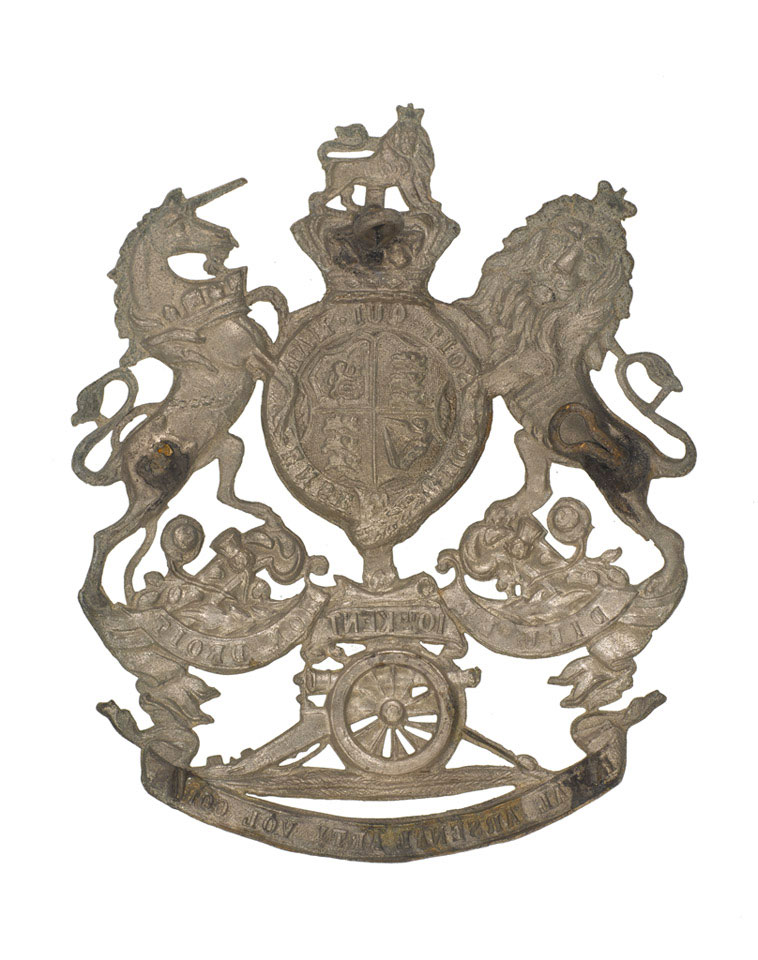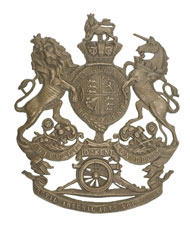
Online Collection
« Prev - 1 of 1 results - Next »
Helmet plate, other ranks, 10th Kent Artillery Volunteers, Royal Arsenal, Queen Victoria pattern, 1880 (c)
White metal badge with the Royal coat of arms within a garter bearing the motto, 'Honi Soit Qui Mal Y Pense' (Shame on him who thinks evil of it), surmounted by a crown and lion crest; lion and unicorn supporters above scrolls bearing the motto, 'Dieu et Mon Droit' (God and My Right), above an artillery piece, with a scroll above bearing the inscription, '10th Kent', and another below, bearing the remainder of the unit title, 'Royal Arsenal Arty Vol Corps'.
When an invasion scare in 1859 led to a flood of volunteers forming new military units to defend Great Britain, artillery volunteers corps were formed. Men working at Woolwich Arsenal organised themselves into one such Corps. Formally constituted on 28 February 1860, and designated the 10th (Royal Arsenal) Kent Artillery Volunteer Corps, the unit was manned by artisans from the Shot and Shell Factory. Originally raised as eight batteries, the strength of the 10th Kent declined to six batteries during the 1860s, but it also had the small 2nd and 3rd Essex AVCs attached to it. In 1875, the 10th Kent Artillery Volunteers won the Queen's Prize at the National Artillery Association annual competition held at Shoeburyness Old Ranges.
During the 1880s many Artillery Volunteer units were reorganised, and the 10th Kent became the 3rd Kent Volunteer Artillery (Royal Arsenal).
Volunteer corps wore silver or white metal insignia, until the creation of the Territorial Force (TF) in 1908.
NAM Accession Number
NAM. 1959-12-195-6
Copyright/Ownership
Crown Copyright
Location
National Army Museum, Study collection
Object URL
https://collection.nam.ac.uk/detail.php?acc=1959-12-195-6


